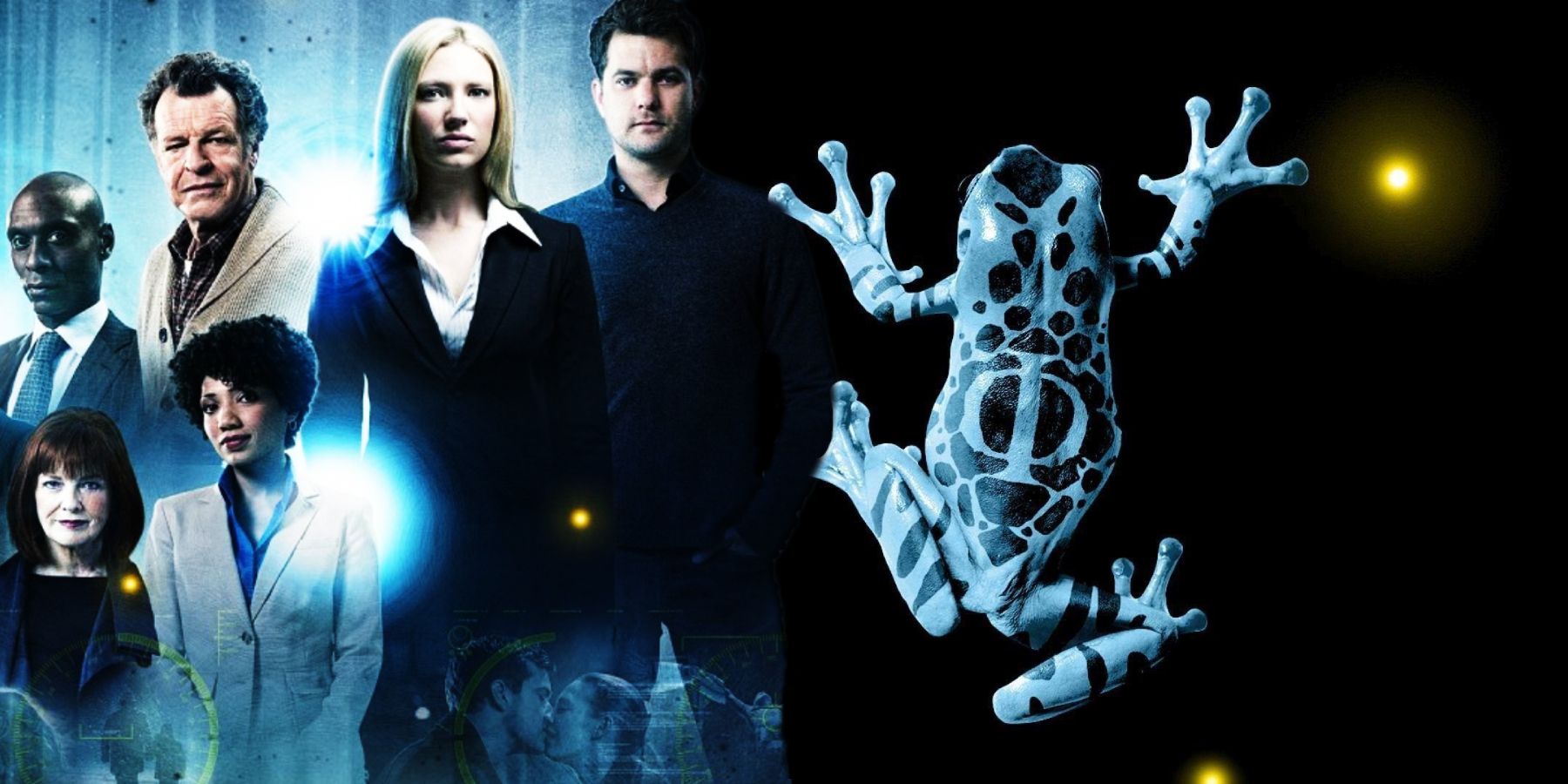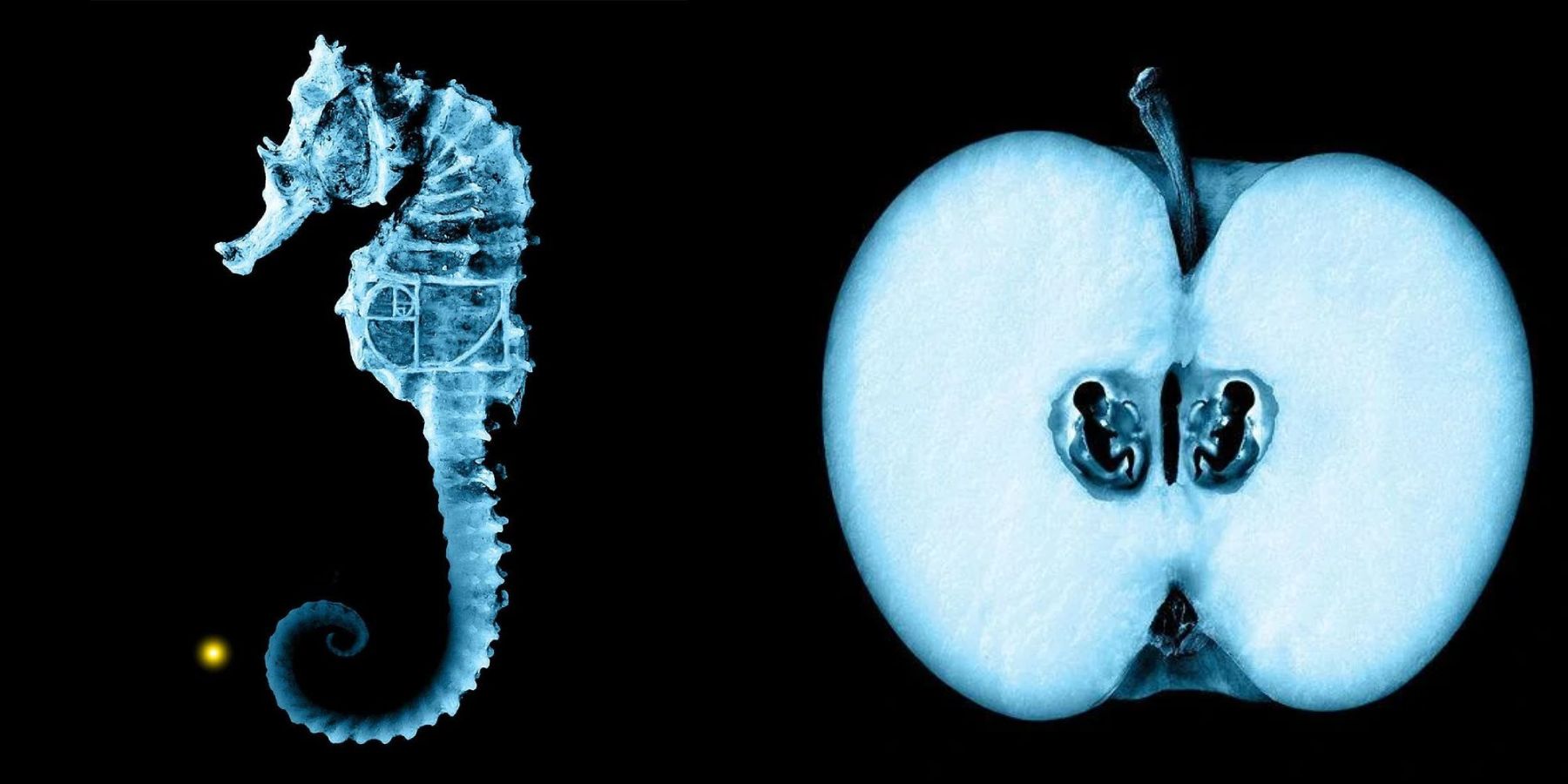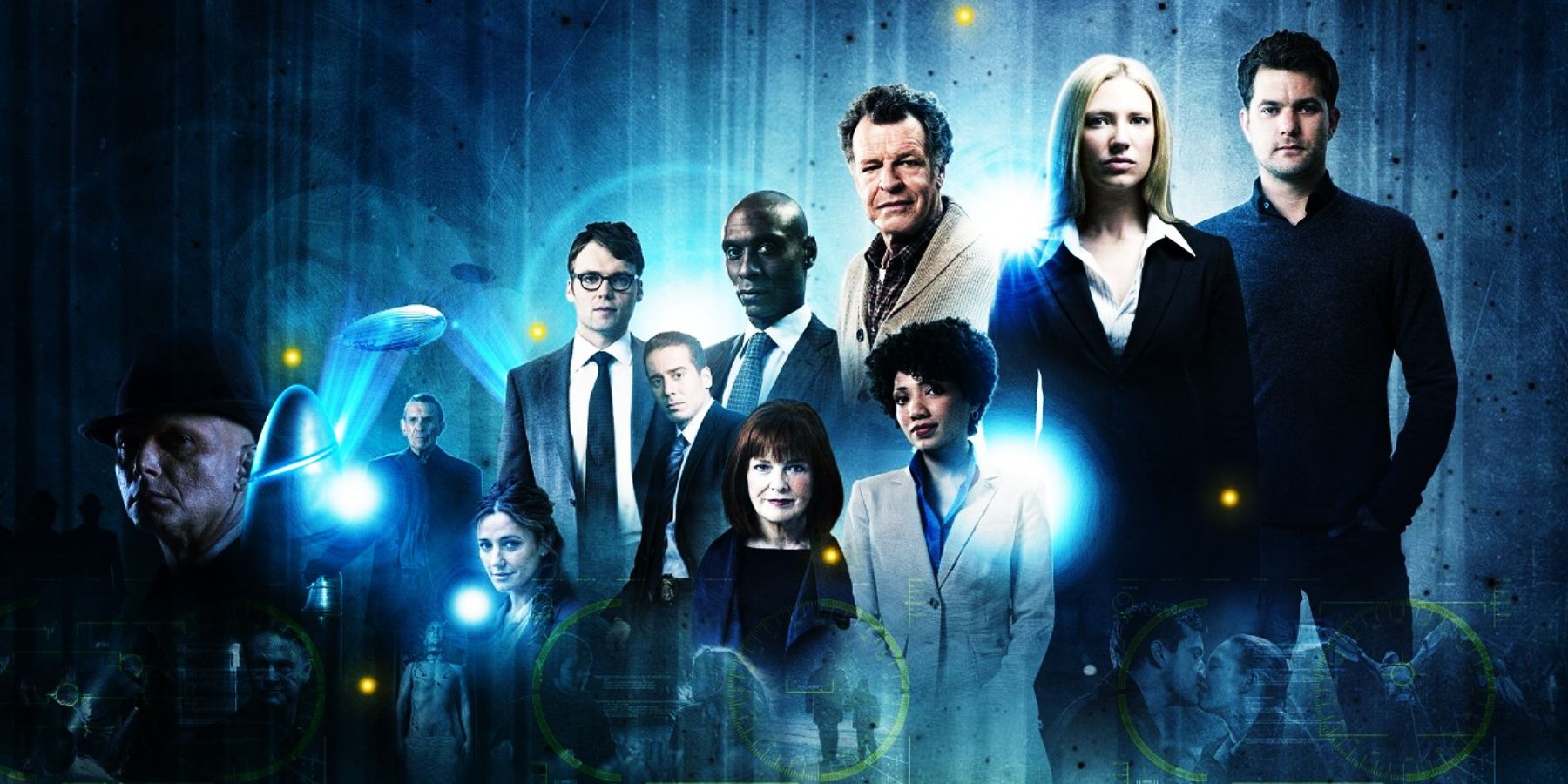The glyphs that signified the end of each act in an episode of Fringe were the key to a secret code that spelled out clues to the show's overarching narrative. Each of the glyphs was an image of a natural element such as an apple or a leaf, that contained a subtle unnatural change such as human embryos or a Delta symbol. As well as appearing before each advert break while Fringe was on TV between 2008 and 2013, the glyphs also featured on promotional artwork and formed the basis of a Fringe scavenger hunt at Comic-Con 2008.
Fringe was compared to The X-Files due to the way that it combined a monster-of-the-week format with a sprawling mythology arc. What began as an X-Files-style investigation into fringe science turned into the story of a war between two parallel worlds in season 2 and then a war between humanity and its own genetically enhanced future. The glyphs that featured heavily throughout the show tied into this mythology, and the intrigue surrounding them captured the imagination of Fringe's dedicated viewers.
Fringe's Glyphs Represent A Hidden Code
The glyphs featured before each advert break or act represented a secret alphabet, identified by what the image was, its orientation on the screen, and the positioning of the yellow dot that accompanied each image on one of its four corners. In 2009, Julian Sanchez at Ars Technica cracked the correct way to interpret the Fringe show glyphs, by recognizing it as a "monoalphabetic substitution cypher". In essence, each letter of the alphabet had been substituted by one of the eight images and the yellow dot in different orientations.
After Sanchez cracked the code, and his solution was confirmed by the show's creators, a Fringe fansite created a glyph key to enable viewers to guess the words that were being spelled out in each episode and their meaning. For example, the glyphs in Fringe season 1, episode 14, "Ability" reveal the word OLIVIA. It's in "Ability" that it's revealed to the audience that, as a child, Agent Olivia Dunham (Anna Torv) was part of the drug trials conducted by Walter Bishop (John Noble) in the 1980s. The glyphs during "An Enemy of Fate", the episode that brings Fringe's timeline to an end, spell out the word CLOSE.
How Fringe's Glyph Code Improved The Show's Mythology
The inclusion of a cipher prior to each ad break is an example of how Fringe cultivated a dedicated audience who desperately sought out clues to the overarching story. When Julian Sanchez cracked the code after only 14 episodes, there was still work to do to identify some remaining letters. This, combined with deciphering each week's glyph code, added a fun interactive element to the show that went beyond just scrutinizing the way actors delivered dialog, or analyzing the layout of props or use of scenery for story clues.
There was a thrill to be had in working out the word before the final reveal, because far from being spoilers, they could often be ominous or tantalizing. For example, viewers paying attention to the glyph code in the Fringe season 3 finale would have revealed that it spelled out NOMORE. It's a clue to the erasure of Peter Bishop (Joshua Jackson) from the prime timeline at the end of the episode, leaving those that cracked the code early to experience mounting dread as Peter's efforts to save both worlds by merging them lead to his own erasure. Using the glyph code, Fringe cultivated audience engagement with the show's mythology in a rewarding and unique way.



